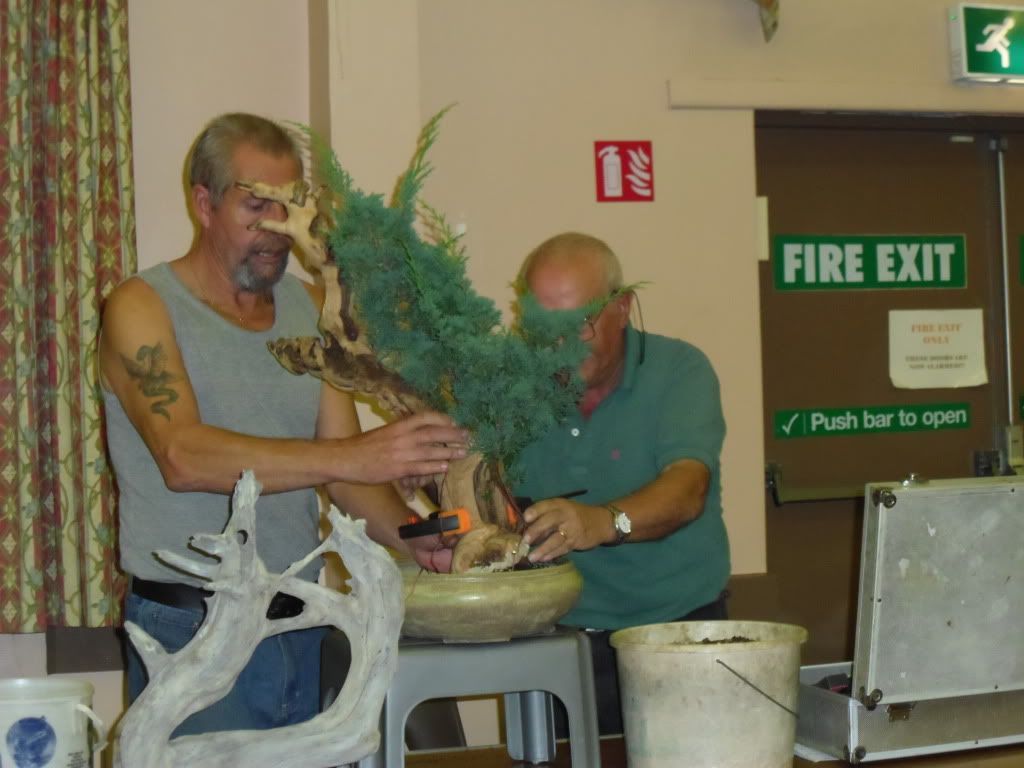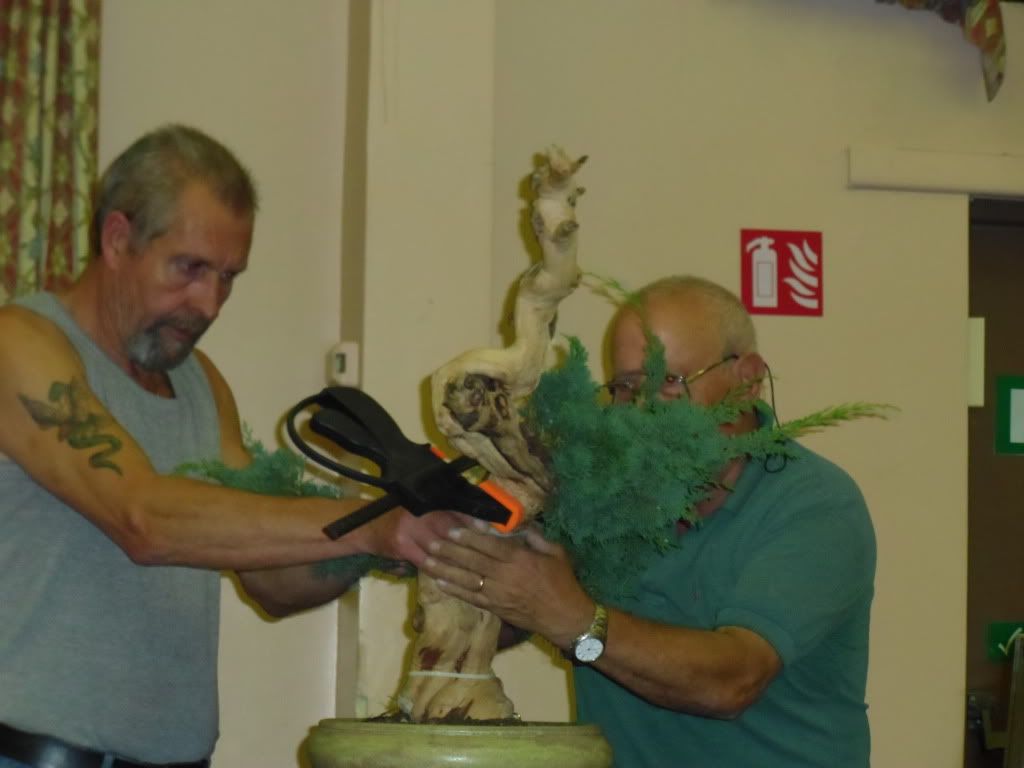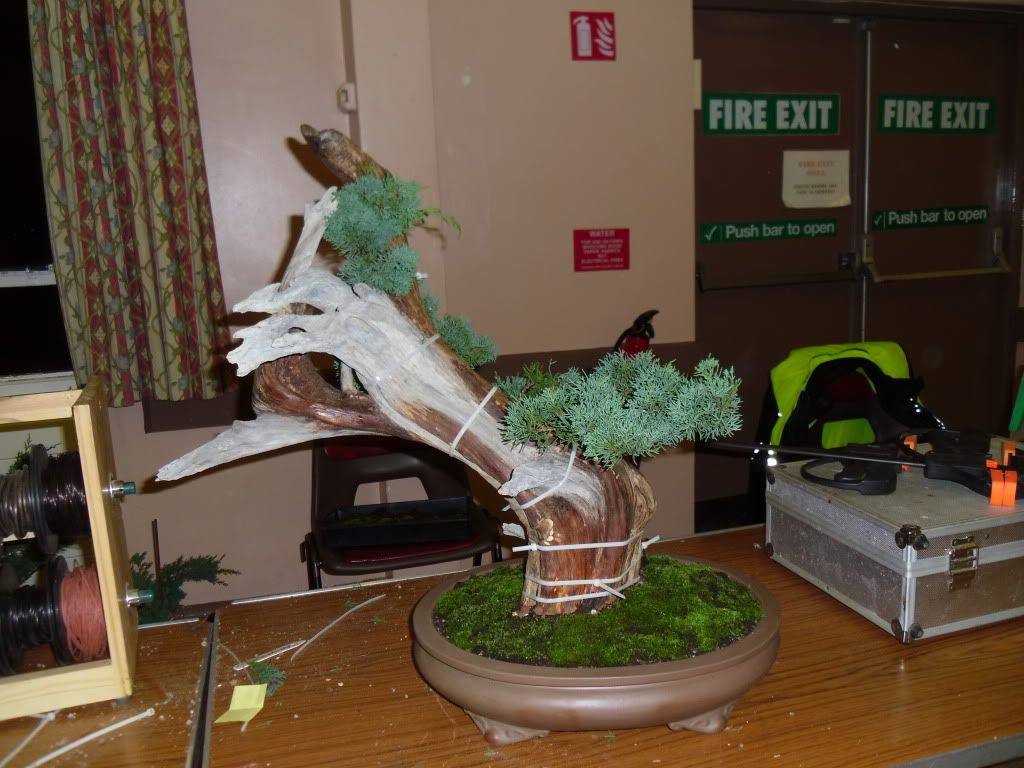Tonight was club night at Wessex Bonsai Society and a really good one at that. The speakers for the evening were our very own members Italo and Manuel. The lecture was on 'Tanuki'.
The word tanuki stems from the Japanese raccoon dog which is said to have the ability to change its shape and there for is regarded as a trickster and a fraud. Tanuki can also be referred to in the west as Phoenix grafts. The reason they have this Japanese name that means fraud is because in Japan they are regarded as a fake bonsai tree and the Japanese do not allow tanuki to be entered in to bonsai competitions.
Now I don't personally fully agree with the term fake because the all the foliage whether it be leaf or needle is grown and developed in the normal way there for a tanuki bonsai tree is still a bonsai tree. It's just the element of the tree that is not growing that is added to trick the viewer in to thinking the tree is older than it really is. Now please correct me if I am wrong but is bonsai not all about tricking the individual that is viewing the tree in to believing it is something it is not anyway? For example when an azalea is grown to resemble a fully grown tree that has been miniaturised? I can understand the Japanese ruling out tanuki bonsai trees being entered in to competitions but I think there missing out by not having maybe a tanuki category.
Italo and Manuel brought along some amazing examples of tanuki bonsai trees one of which they had began development on 40 years ago! Manuel also brought along a couple of Chinese junipers that had not had dead wood added to them but were in fact what the Japanese would regard as 'real' junipers. The difference can be seen but for a pure instant visual impact the tanuki bonsai tree would rate a lot higher than the original juniper. You be the judge, which is real and which tanuki?
The answer is.... Both of them. The tree on your left is the one the guys started over 40 years old and the tree to the right has two live trunks running up the bleached white dead Juniper that did not make the import to the UK. Although neither of these trees are 100% grown trees I'm sure you agree they are very impressive never the less.
Italo and Manuel with there usual Mediterranean flare worked together to explain and demonstrate on two very large pieces of dead wood, how using some wedges to hold the dead wood out of the soil to prevent it rotting, wires to secure the dead wood to the pot much like you would a tree, brass eyelets as anchor points for the wires, some brass screws to hold the living tree to the dead wood and a whopping bucket of full of imagination a tree that is only a few years old can be made to look like it has been around a lot longer that you and I.
Here are a couple of photos of Italo and Manuel working together on the trees. I could see from the demonstration that creating a tanuki bonsai is most definitely a two man operation as you need to hold alot in to place. Even with the use of clamps, cable ties and two pairs of hands the job was an awkward and very fiddly one.
I asked the question "which is the most important ingredient when creating a tanuki and which would they advise I got right first, Good growing material or good dead wood material?" Both guys replied without a doubt the dead wood is the vital part. You can grow the tree in and around the dead wood to create the image you desire so its important to get the dead wood right first.
You can see from the two trees below that started off at 7:30 as two very large pieces of dead wood and some Chinese Juniper whips now with very minimal styling because of limited time look like established old and very large bonsai that would sit well on most bonsai collectors benches and could in time be entered in a show and hold there own.
I have already managed to get my hands on a lovely piece of dead wood that I believe to be wisteria. I found it on my travels and thought it ideal for a tanuki with a juniperus squamata I have that has very limited potential because of its long sparse trunks and branch structure. But after watching Italo and Manuel with there Chinese junipers I've decided to keep the dead wood I have until I can get my hands on some Chinese juniper that will suit. In the mean time I shall keep my eyes peeled for another piece to marry up with the juniperus squamata as a practice run.






No comments:
Post a Comment